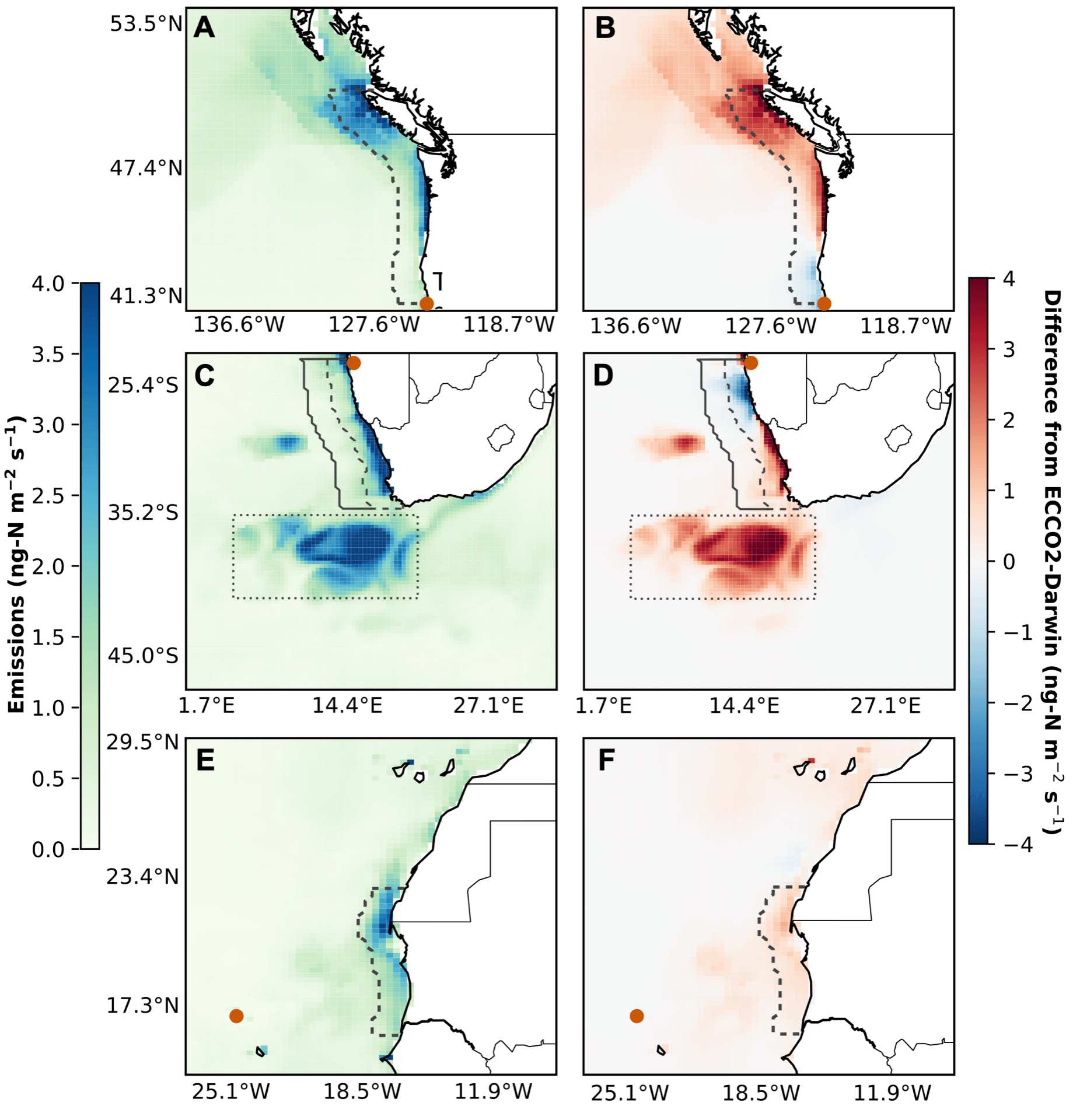Our recent study shows how marine emissions of the potent greenhouse gas, nitrous oxide, can be detected in atmospheric concentration measurements from coastal towers. Our work, published in Geophysical Research Letters, looks at nitrous oxide emissions from the “hotspot” Eastern Boundary Upwelling Systems (EBUS) on western North America (California upwelling system), north-western Africa (Canary upwelling system) and south-western Africa (Benguela upwelling system). Our main findings are that: emissions can exhibit large pulses of emissions and we document very large emissions in the Agulhas current region off southern Africa and that emissions in the north Pacific vary with large-scale climatic conditions such as the Pacific Decadal Oscillation. Long-term atmospheric measurements from coastal stations provide one way to track long-term changes in the EBUS’s that are predicted to occur with deoxygenation of the oceans.
